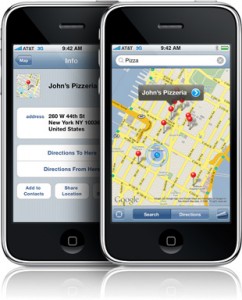
U.S. Car Ownership Drops by 3.5 Million in 2009
In the United States, we embarrassingly have more vehicles than people with driver’s licenses. We have 246 million vehicles. AAA estimates that it costs $8,000 per year for each car owned, which creates a financial burden on cash-strapped Americans.
To the rescue are 10 positive trends that helped Americans scrap 14 million cars in 2009, while only buying 10.5 million new ones. The 2009 drop was the only large decline in the past 50 years shows the U.S. Department of Transportation.
1. Urban Density. For the first time, most Americans live in urban areas where they need fewer cars, have better public transit, can share cars, and accomplish more trips with walking.
2. Public Transit. Americans made 11 billion trips on U.S. transit in 2008, a 50-year record. Use dropped only slightly despite transit operators being forced to cut some routes and remove buses as the recession drove down local sales tax revenues needed for public transit.
3. Smart Growth. Community and regional planners are making cities vibrant, with work, services, and play close at hand. Portland, Oregon, is a role model in creating urban density and great public transportation. California with SB375 is requiring regional plans that integrate development, transportation, and greenhouse gas reduction.
4. One Car Households. The average suburban U.S. household has two vehicles. Some more. The average urban U.S. household has one vehicle. More American families and roommates are going from three cars to two cars to one car.
5. Employer Commute and Flexwork Programs. Major employers are saving employees billions in travel costs. Employers sponsor ride sharing, last mile shuttles from transit, and guaranteed ride homes. Some employers have web sites and lunch-and-learns to help employees in the same zip codes match-up for car pooling. 57 million Americans work at home, at least part-time, with the help of flexwork programs. Employer programs have helped with reduced car ownership.
6. Recession. The recession dispelled the myth that demand for cars and gasoline is price inelastic. When consumers are stretched, demand is elastic. About 20 percent of a U.S. carowner’s disposable income is spent on the car, maintenance, insurance, and fuel. Oil prices have more than doubled since their bottom in March 2009. The era of cheap gasoline is over as producers go to more expensive techniques such as deep oil drilling and strip mining Canada for tar sands.
7. Cash for Clunkers removed 700,000 vehicles from the U.S. roads.
8. Rail Connected. City transit is enhanced with regional commuter rail and with rail connected cities. Our latest World Series was dubbed the “Amtrak Series” as fans easily whisked between New York and Philadelphia. Rail connects the transit systems of cities into effective regional transportation. Fewer cars are needed. Yes, the United States lags behind Europe and Japan. Even China is implementing 5,000 miles of high speed rail. Given small hope, suburban rail and rail connected cities are on the rise in parts of the United States. APTA Center for High-Speed Rail
9. Car Sharing. In 600 global cities, cars can be used by the hour. Car sharing is popular with individuals and fleets. At many university and colleges, students with good grades can participate at age 18. Add transit and bicycling and many students live car free. Zipcar’s 350,000 members each take over 15 personally owned vehicles off the road. Members of Zipcar and car sharing programs report a 47% increase in public transit trips, a 10% increase in bicycling trips, and a 26% increase in walking trips. The success of car sharing has lead to success of bicycle sharing in Europe, giving millions last mile solutions between transit stations and employers and other city destinations.
10. Intermodal Intelligence. Internet savvy people now use Google Maps, 511, car share apps, and smart phone GPS apps to compare car directions and time with public transit directions and time. With a few clicks on a social network a shared ride is arranged, or a shared car reserved. In the old millennium we got everywhere by solo driving in gridlock. In the new millennium we plan and use a mix of car driving, transit, and other modes to save time and money.

Could you site your sources for some of those statistics? They would be useful for me but I need sources…